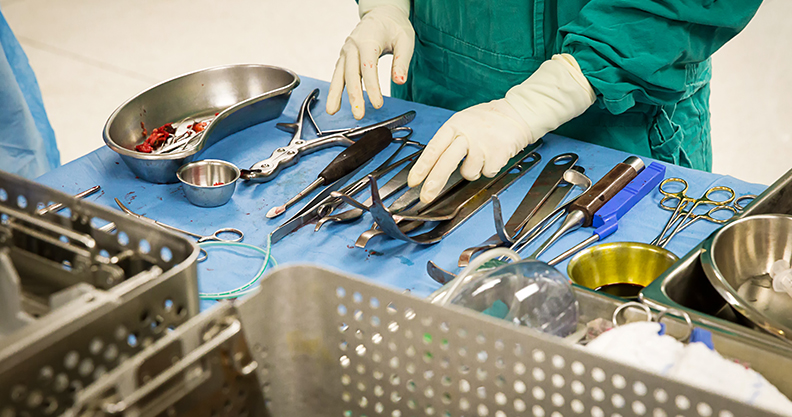
You’re tasked with development of an orthopaedic implant system. Your team knows your implant, the anatomy and surgical techniques, but they may not have expertise in the design of the cutting instruments used to prepare the anatomy for the implant. You need to design safe and effective cutting instruments for your customers. What do you do?
With any medical device, the design and manufacture of surgical cutting instruments are critical to its performance. Many engineers are well-versed in surgical procedures, anatomy and implant design and function, but it’s a rarity when they get exposed to surgical cutting instruments. These tools have historically evolved from other industrial applications and are adopted into surgery. While they get the job done more times than not, performance may be suboptimal. Subtle design features and manufacturing methods translate to better performance. There is a need for surgical cutting instruments to be designed and manufactured specifically for a surgical procedure.
As with implants, to produce a successful cutting instrument, it is necessary to combine the engineer’s clinical and mechanical experience with feedback from surgeons and biomedical experts. The properties of human bones, such as hardness and density, impact the use of tools during surgical procedures. Cranial, scapular and patellar bones, for example, are among the hardest in the body. The femur, tibia and humerus have varying hardness and density depending on location of cut. Long bone ends tend to be much harder than the mid-shaft of the bones, and the outer cortex is denser than the inner cancellous bone. Each of these bone types requires different considerations in the design of surgical cutting instruments. It comes down to selecting the correct tool for the job at hand.
“If a surgical cutting tool is poorly designed, it can cause such outcomes as thermal necrosis by overheating the bone, an inability to cut, slow cutting or jamming in bone,” says Spencer Shore, design engineer. “Feedback from surgeons is part of our design process. They tell us about problems they’ve experienced with cutting instruments, such as bending, breaking, overheating or inefficient cutting.”
Consider trauma surgery, and the drilling location for screw insertion. The surgeon may be working freehand to align and attach several bone fragments to an implant. His primary need is to ensure accurate hole location, size and approach angles. Such precision requires a drill designed with a sharp point angle, self-centering tip and less-aggressive cutting for more control. If, however, a surgeon prefers to use a drill guide or a guide wire with a cannulated drill, the design can utilize more aggressive relief and rake angles for increased speed, shorter surgical times and decreased risk of necrosis.
The correct relief and rake angles are essential to good cutting in any application. They prevent rubbing and create more bite. That means less time drilling in the bone, which results in less heat and less risk of necrosis.
Depending upon the surgical application, the optimal drill geometry, flute, end cuts—all of the front-end design work should be considered in conjunction with the manufacturing process. The design transfer process begins with initial prototype drawings, utilizing design for manufacture right away. When you get manufacturing involved early with the design, production can quickly and consistently deliver a quality product that not only matches the print, but also the application.
Understanding the surgical procedure is critical to not only properly design the cutting instrument, but to properly manufacture it. “If a drill has been over-designed for the procedure and application, it will be more expensive than it needs to be,” says Andrew Szelogowski, manufacturing process engineer. “We eliminate redundancies and we enable cost controls along the way. If engineers simply handed off their designs to manufacturing with no feedback, critical details will be lost. The ‘silo’ mentality doesn’t allow for collaborative work, which results in better, more cost effective products.”
And with an increased use of disposable, single-use cutting instruments, cost is a significant factor in the selection of suppliers. Bargain products from low-cost sources may not give the performance needed for an optimal procedure.
“Suppliers may not have the knowledge of both design and manufacture that makes cutting instruments perform well for the procedure they were intended for,” says Kenneth Altman, engineering and process development manager.
Cutting tools can look similar, but they don’t all perform alike. Careful analysis of critical features reveals distinct differences in design and quality among manufacturers.
Peter Bayer is a licensed professional engineer in the state of Connecticut and the Business Development Manager for Orchid Design, a full service product design and development firm specializing in orthopaedic devices, including surgical cutting instruments.
Orchid Design
www.orchid-orthopedics.com/orchid-design




